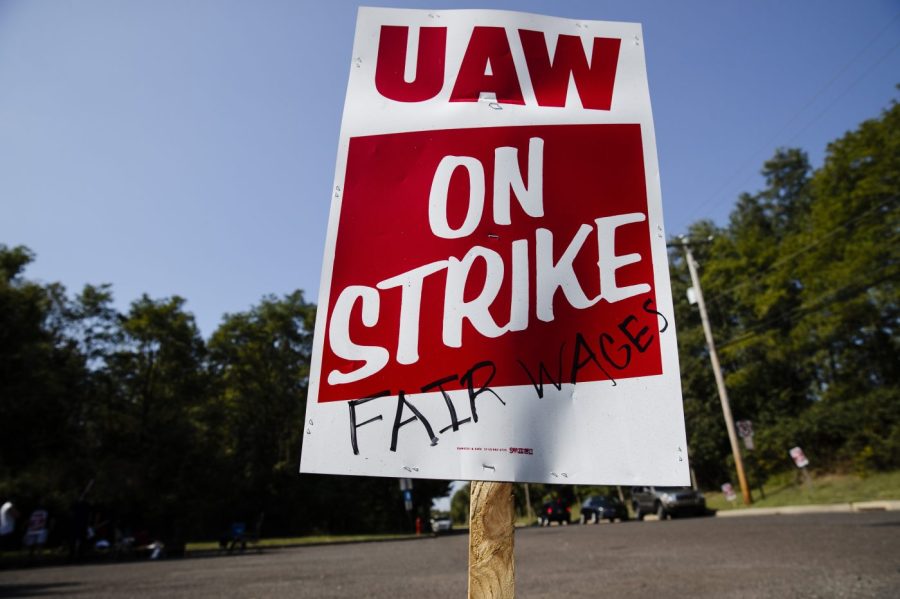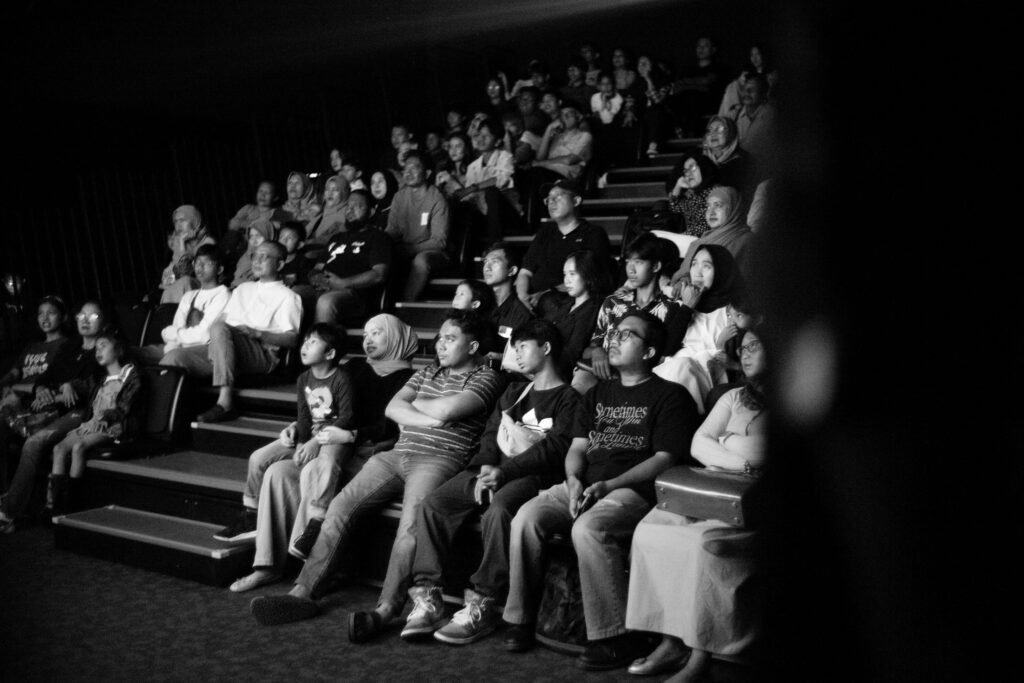Business
5 things to know about a possible UAW strike on August 15, 2023 at 5:29 pm Business News | The Hill

With one month before their contract expires on Sept. 14, President Joe Biden is asking the United Auto Workers union and the Big Three automakers to work together and forge a fair agreement.
Negotiations between UAW and the Big Three — Ford, General Motors and Stellantis — began in early July over pay increases, pensions and career security. Autoworkers are particuarly concerned about how the shift to electric vehicles could threaten their jobs and compensation.
5 big questions about the ‘summer of strikes’
“The need to transition to a clean energy economy should provide a win‑win opportunity for auto companies and unionized workers,” Biden said in a statement released Monday.
“Companies should use this process to make sure they enlist their workers in the next chapter of the industry by offering them good paying jobs and a say in the future of their workplace.”
A fair contract, Biden added, would mean that Big Three auto workers could support their families, sustain their right to organize, and have priority to fill the jobs that the transition to clean energy will create.
Biden meets with UAW president while group withholds 2024 endorsement
“The UAW helped create the American middle class and as we move forward in this transition to new technologies, the UAW deserves a contract that sustains the middle class,” Biden concluded.
Here’s what you need to know about the ongoing negotiations and impending strike:
What are the UAW’s demands?
In this image from video, Shawn Fain, then a candidate for president of the United Auto Workers, is interviewed in Detroit, on Friday, Jan. 13, 2023. (AP Photo/Mike Householder, File)
UAW President Shawn Fain said last week the Big Three are facing “the most audacious and ambitious list of proposals they’ve seen in decades.”
The union is calling to eliminate tiers on wages and benefits, something that was included in the tentative agreement between UPS and the Teamsters. They are also calling for double-digit pay increases, more paid time off and higher retiree pay.
In addition, the union is demanding the reinstatement of some previous policies, including cost of living adjustments (COLA), defined benefit pensions and medical benefits for retirees.
The union is looking to secure their right to strike over plant closures. If a plant does close or the companies leave their towns, UAW is demanding that the companies pay the workers who are left behind to do community service work.
What is the context behind these demands?
People arrive at the Flint Assembly Plant for a free tour and open house, Aug. 11, 2015, in Flint, Mich. (Jake May/The Flint Journal via AP)
Following the release of the Big Three’s quarterly earnings reports in late July, Fain said that the automakers have made a combined $21 billion in profits in the first six months of 2023.
He argued that the companies are subsequently funneling billions into stock buyback schemes to “artificially inflate” the companies shares rather than support their workers or devote that money to the electric vehicle transition.
“Our message going into bargaining is clear,” Fain said. “Record profits mean record contracts.”
He also provided a chart to compare the union’s 2007 contracts to the present, which he used to demonstrate that starting wages have decreased and the number of years it takes to earn the top rate has increased.
He also pointed out that COLA was suspended during the Great Recession in 2009 and though the companies have bounced back, COLA has not been reinstated to adjust paychecks to inflation.
Prior to 2007, Fain added, every member of the Big Three received a pension and retiree healthcare. However, with the two-tiered system, many workers receive either no pension and health care plan or a pension that hasn’t increased since 2003.
“(This) paints a damning picture of what’s happening, not just in our industry, but across the economy,” Fain said. “The rich are getting richer while the rest of us are getting left behind.
“When I was elected, I said, “The UAW is back in the fight,’ and that’s what the Big Three are going to see when we head into bargaining,” Fain added.
How have the Big Three responded?
The Ford logo is seen on signage at a Ford dealership, Tuesday, July 27, 2021. (AP Photo/Gerry Broome, File)
General Motors (GM) went public right out of the gate with a website dedicated to providing negotiation updates.
They boasted the total compensation and benefits package they provide to their team members in a July 18 release by GM Chair and CEO Mary Barra, including a healthcare plan, a profit-sharing program and career development and training opportunities
“We have a long history of negotiating fair contracts with the UAW that reward our employees and support the long-term success of our business,” Barra said. “Our goal this time will be no different.”
Mike Perez, vice president of GM Labor Relations, also said they have opportunities for every worker in the transition to all-electric.
GM said in a video that since the signing of its 2011 contract with UAW, they have provided $1,000 in profit sharing for every $1 billion GM earns in the North American market. Following the 2022 fiscal year, GM said hourly union-represented employees received up to a $12,750 profit-sharing check.
The rest of the cash flow, they said, goes to upgrading facilities, retooling plants, engineering vehicles, developing technology and building up supply chains, with a small percentage going to shareholders.
In an Aug. 3 response to Fain, GM said they expect to increase wages but don’t agree with all of the demands.
“The breadth and scope of the Presidential Demands, at face value, would threaten our ability to do what’s right for the long-term benefit of the team,” the statement read. “A fair agreement rewards our employees and also enables GM to maintain our momentum now and into the future.”
Ford has also come out with its own response in the form of an op-ed, written by CEO Jim Farley and published in the Detroit Free Press.
Contrary to Fain’s claims, Farley said that UAW-Ford employees have received wage increases and annual inflation bonuses, which have exceeded what they would have been paid with COLA in place.
He added that 80 percent of those employers make the top wage rate of $32 per hour, in response to the proposal to end the tier system and the claim that it takes 8 years to reach the top wage rate.
In a response to the op-ed, vice president of the UAW’s National Ford Department Chuck Browning commended Ford for their handing out profit sharing checks, expanding health care benefits, and giving many part-time workers full-time status. However, he pushed back on wages, saying that workers were still not compensated enough to attain a decent standard of living, job security or retirement “with dignity.”
Stellantis’ senior manager Jodi Tinson said in a statement that the company and UAW have a long history of working together. She added that Stellantis is focused on ensuring its future competitiveness as well as preserving good wages and benefits that recognize workers’ contributions.
In a letter sent to employees and obtained by Reuters, Stellantis North America COO Mark Stewart said he is committed to reaching an agreement based on “economic realism.” Agreeing to UAW’s current demands, he said, could endanger the company’s ability to make decisions surrounding job security in the future.
“This is a losing proposition for all of us,” he wrote.
Stellantis has made proposals to reduce the fixed cost structure of the business in response to government electric vehicle rules, according to Reuters. Fain said this included cuts to healthcare coverage and fewer vacation days for new hires, among other proposals.
Fain criticized Stellanis’ “concessions” in the Facebook Live, throwing them in the trash and calling them a “slap in the face.”
Stewart said that Fain did not fairly represent the negotiations and that “theatrics and personal insults” will not move the two sides any closer to an agreement.
Who will be affected by a strike?
From the start of negotiations, Fain has said that members should be prepared to strike. In the livestream, he reaffirmed that conviction, reminding viewers that the strike fund is healthy and that UAW leadership has a plan for work stoppage.
“Come Sept. 14, if these companies don’t deliver, they’re going to see this plan unfold,” Fain said.
Traditionally, UAW has singled out one automaker to target but a spokesperson told the AP that the union could choose all three.
Evercore ISI analyst Chris McNally told Axios that the chances of a UAW strike are at least 50 percent, so if all 150,000 UAW workers were to strike with a fund of $825 million dedicated to paying workers $500 per week, the union could strike for about 12 weeks.
The 40-day UAW strike in 2019 cost GM $3.6 billion. However, Stewart said in his letter that it’s too soon to determine whether there will be a strike.
“At this very early stage, no one should jump to any conclusions about the outcome of the process,” he said.
What are the political risks for Biden?
While Biden has pledged to be a staunch ally of unions, he is yet to secure UAW’s endorsement for his reelection campaign. The union backed Biden against then-President Trump in 2020, but announced in May it would withhold its endorsement.
Fain insisted the union must see a “just transtion” to EVs as the Biden administration pushes to shift automaking to a greener future.
Business, Economy, inflation, President Joe Biden, unions, United Auto Workers With one month before their contract expires on Sept. 14, President Joe Biden is asking the United Auto Workers union and the Big Three automakers to work together and forge a fair agreement. Negotiations between UAW and the Big Three — Ford, General Motors and Stellantis — began in early July over pay increases, pensions…
Business
Why 9 Million Americans Have Left

The Growing American Exodus
Nearly 9 million Americans now live outside the United States—a number that rivals the population of several states and signals a profound shift in how people view the American dream. This mass migration isn’t confined to retirees or the wealthy. Thanks to remote work, digital nomad visas, and mounting pressures at home, young professionals, families, and business owners are increasingly joining the ranks of expats.

Rising Costs and Shrinking Wallets
Living in the US has become increasingly expensive. Weekly grocery bills topping $300 are not uncommon, and everyday items like coffee and beef have surged in price over the last year. Rent, utilities, and other essentials also continue to climb, leaving many Americans to cut meals or put off purchases just to make ends meet. In contrast, life in countries like Mexico or Costa Rica often costs just 50–60% of what it does in the US—without sacrificing comfort or quality.
Health Care Concerns Drive Migration
America’s health care system is a major trigger for relocation. Despite the fact that the US spends more per person on health care than any other country, millions struggle to access affordable treatment. Over half of Americans admit to delaying medical care due to cost, with households earning below $40,000 seeing this rate jump to 63%. Many expats point to countries such as Spain or Thailand, where health care is both affordable and accessible, as a major draw.

Seeking Safety Abroad
Public safety issues—especially violent crime and gun-related incidents—have made many Americans feel unsafe, even in their own communities. The 2024 Global Peace Index documents a decline in North America’s safety ratings, while families in major cities often prioritize teaching their children to avoid gun violence over simple street safety. In many overseas destinations, newly arrived American families report a significant improvement in their sense of security and peace of mind.
Tax Burdens and Bureaucracy
US tax laws extend abroad, requiring expats to file annual returns and comply with complicated rules through acts such as FATCA. For some, the burden of global tax compliance is so great that thousands relinquish their US citizenship each year simply to escape the paperwork and scrutiny.
The Digital Nomad Revolution
Remote work has unlocked new pathways for Americans. Over a quarter of all paid workdays in the US are now fully remote, and more than 40 countries offer digital nomad visas for foreign professionals. Many Americans are leveraging this opportunity to maintain their US incomes while cutting costs and upgrading their quality of life abroad.

Conclusion: Redefining the Dream
The mass departure of nearly 9 million Americans reveals deep cracks in what was once considered the land of opportunity. Escalating costs, inaccessible healthcare, safety concerns, and relentless bureaucracy have spurred a global search for better options. For millions, the modern American dream is no longer tied to a white-picket fence, but found in newfound freedom beyond America’s borders.
Business
Will Theaters Crush Streaming in Hollywood’s Next Act?

Hollywood is bracing for a pivotal comeback, and for movie lovers, it’s the kind of shake-up that could redefine the very culture of cinema. With the freshly merged Paramount-Skydance shaking up its strategy, CEO David Ellison’s announcement doesn’t just signal a change—it reignites the passion for moviegoing that built the magic of Hollywood in the first place.

Theatrical Experience Roars Back
Fans and insiders alike have felt the itch for more event movies. For years, streaming promised endless options, but fragmented attention left many longing for communal spectacle. Now, with Paramount-Skydance tripling its film output for the big screen, it’s clear: studio leaders believe there’s no substitute for the lights, the hush before the opening credits, and the collective thrill of reacting to Hollywood’s latest blockbusters. Ellison’s pivot away from streaming exclusives taps deep into what unites cinephiles—the lived experience of cinema as art and event, not just content.
Industry Pulse: From Crisis to Renaissance
On the financial front, the numbers are as electrifying as any plot twist. After years of doubt, the box office is roaring. AMC, the world’s largest theater chain, reports a staggering 26% spike in moviegoer attendance and 36% revenue growth in Q2 2025. That kind of momentum hasn’t been seen since the heyday of summer tentpoles—and it’s not just about more tickets sold. AMC’s strategy—premium screens, with IMAX and Dolby Cinema, curated concessions, and branded collectibles—has turned every new release into an event, driving per-customer profits up nearly 50% compared to pre-pandemic norms.
Blockbusters Lead the Culture
Forget the gloom of endless streaming drops; when films like Top Gun: Maverick, Mission: Impossible, Minecraft, and surprise hits like Weapons and Freakier Friday draw crowds, the industry—and movie fans—sit up and take notice. Movie-themed collectibles and concession innovations, from Barbie’s iconic pink car popcorn holders to anniversary tie-ins, have made each screening a moment worth remembering, blending nostalgia and discovery. The focus: high-impact, shared audience experiences that streaming can’t replicate.
Streaming’s Limits and Studio Strategy
Yes, streaming is still surging, but the tide may be turning. The biggest franchises, and the biggest cultural events, happen when audiences come together for a theatrical release. Paramount-Skydance’s shift signals to rivals that premium storytelling and box office spectacle are again at the center of Hollywood value creation. The result is not just higher profits for exhibitors like AMC, but a rebirth of movie-going as the ultimate destination for fans hungry for connection and cinematic adventure.

Future Forecast: Culture, Community, and Blockbuster Dreams
As PwC and others warn that box office totals may take years to fully catch up, movie lovers and industry leaders alike are betting that exclusive theatrical runs, enhanced viewing experiences, and fan-driven engagement are the ingredients for long-term recovery—and a new golden age. The Paramount-Skydance play is more than a business move; it’s a rallying cry for the art of the theatrical event. Expect more big bets, more surprises, and—finally—a long-overdue renaissance for the silver screen.
For those who believe in the power of cinema, it’s a thrilling second act—and the best seat in the house might be front and center once again.
Business
Why Are Influencers Getting $7K to Post About Israel?

Influencers are being paid as much as $7,000 per post by the Israeli government as part of an expansive and sophisticated digital propaganda campaign. This effort is designed to influence global public opinion—especially among younger social media users—about Israel’s actions in Gaza and to counter critical narratives about the ongoing humanitarian situation.

How Much Is Being Spent?
Recent reports confirm that Israel has dedicated more than $40 million this year to social media and digital influence campaigns, targeting popular platforms such as TikTok, YouTube, and Instagram. In addition to direct influencer payments, Israel is investing tens of millions more in paid ads, search engine placements, and contracts with major tech companies like Google and Meta to push pro-Israel content and challenge critical coverage of issues like the famine in Gaza.
What’s the Strategy?
- Influencer Contracts: Influencers are recruited—often with all-expenses-paid trips to Israel, highly managed experiences, and direct payments—to post content that improves Israel’s image.
- Ad Campaigns: State-backed ad buys show lively Gaza markets and restaurants to counter global reports of famine and humanitarian crisis.
- Narrative Management: These posts and ads often avoid overt propaganda. Instead, they use personal stories, emotional appeals, and “behind the scenes” glimpses intended to humanize Israel’s side of the conflict and create doubt about reports by the UN and humanitarian agencies.
- Amplification: Paid content is strategically promoted so it dominates news feeds and is picked up by news aggregators, Wikipedia editors, and even AI systems that rely on “trusted” digital sources.
Why Is This Happening Now?
The humanitarian situation in Gaza has generated increasing international criticism, especially after the UN classified parts of Gaza as experiencing famine. In this environment, digital public relations has become a primary front in Israel’s efforts to defend its policies and limit diplomatic fallout. By investing in social media influencers, Israel is adapting old-school propaganda strategies (“Hasbara”) to the era of algorithms and youth-driven content.
Why Does It Matter?
This campaign represents a major blurring of the lines between paid promotion, journalism, and activism. When governments pay high-profile influencers to shape social media narratives, it becomes harder for audiences—especially young people—to distinguish between authentic perspectives and sponsored messaging.

In short: Influencers are getting $7,000 per post because Israel is prioritizing social media as a battleground for public opinion, investing millions in shaping what global audiences see, hear, and believe about Gaza and the conflict.

 Business4 weeks ago
Business4 weeks agoDisney Loses $3.87 Billion as Subscription Cancellations Surge After Kimmel Suspension

 Entertainment4 weeks ago
Entertainment4 weeks agoWhat the Deletion Frenzy Reveals in the David and Celeste Tragedy

 Entertainment4 weeks ago
Entertainment4 weeks agoABC Suspends ‘Jimmy Kimmel Live!’ Indefinitely After Kirk Remarks

 Entertainment3 weeks ago
Entertainment3 weeks agoExecutive Producer Debut: How Celia Carver Created Festival Hit ‘Afterparty’

 Film Industry4 weeks ago
Film Industry4 weeks agoCan Movie Theaters Steal the Show from Streaming?

 Health4 weeks ago
Health4 weeks agoRussia Claims 100% Success With New mRNA Cancer Vaccine

 News4 weeks ago
News4 weeks agoBody of Missing Teen Found in Tesla Linked to Musician D4vd

 Business4 weeks ago
Business4 weeks agoWhy Small Theaters Are Thriving While the Industry Struggles




























